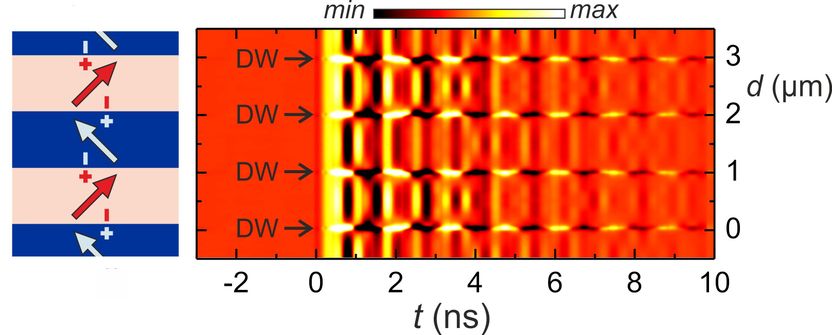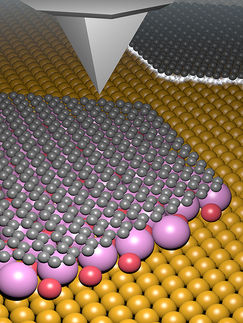Molecular self-assembly controls graphene-edge configuration
A research team headed by Prof. Patrick Han and Prof. Taro Hitosugi at the Advanced Institute of Materials Research (AIMR), Tohoku University discovered a new bottom-up fabrication method that produces defect-free graphene nanoribbons (GNRs) with periodic zigzag-edge regions. This method, which controls GNR growth direction and length distribution, is a stepping stone towards future graphene-device fabrication by self-assembly.

Graphene nanoribbons are fabricated by molecular assembly on a Cu(111) substrate. On this surface system, GNRs on grow in six azimuthal directions exclusively. White lines in the inset highlight the zigzag edges of a ribbon.
Patrick Han
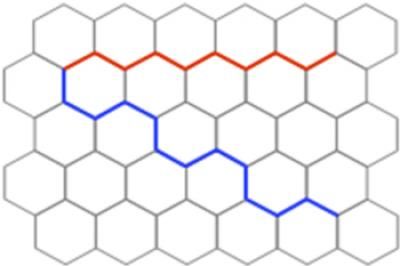
This shows the definition of zigzag (red) and armchair (blue) configurations in a honeycomb lattice.
Patrick Han
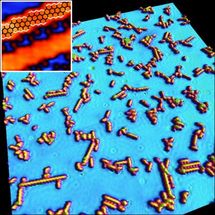
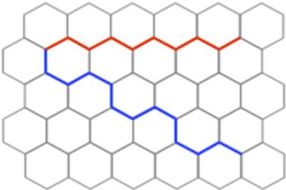
Graphene, with its low dimensionality, high stability, high strength, and high charge-carrier mobility, promises to be a revolutionary material for making next-generation high-speed transistors. Moreover, graphene's properties are predicted to be directly controllable by its structure. For example, recent works have demonstrated that the bandgap of armchair GNRs is controlled by the ribbon width. However, the property-tailoring capabilities of other edge conformations (e.g., the zigzag edge is predicted by theory to have magnetic properties) have not been tested, because their defect-free fabrication remains a major challenge.
"Previous strategies in bottom-up molecular assemblies used inert substrates, such as gold or silver, to give molecules a lot of freedom to diffuse and react on the surface," says Han. "But this also means that the way these molecules assemble is completely determined by the intermolecular forces and by the molecular chemistry." Currently, there is no molecule that can assemble to produce zigzag-edge GNRs.
To target the zigzag edge, the AIMR team used a copper surface—a substrate more reactive than gold or silver—to introduce new substrate-to-molecule interactions, in addition to the intermolecular interactions. The effects of this strategy were demonstrated using a precursor molecule known to form armchair-edge GNRs. On copper, scanning tunneling microscope images revealed a molecular assembly that is entirely different than that on gold or silver, yielding GNRs with periodic zigzag-edge regions. Future directions include the assessment of other reactive surfaces for bottom-up GNR fabrication, and the determination of the property-tailoring effects of the GNR edges shown in this work.
Moreover, the surface reactivity of the copper substrate also has a profound effect on both the GNR length distribution and surface growth direction. Unlike previous assemblies, the current method produces shorter ribbons, only in six surface azimuthal directions. These features could be exploited for making single graphene interconnections between prefabricated structures by self-assembly.
"Diffusion-controlled assemblies, as seen on gold and silver, produce bundles of long GNRs. These methods are good for making interconnect arrays, but not single connections", Han says. "Our method opens the possibility for self-assembling single graphene devices at desired locations, because of the length and of the direction control."
Original publication
Other news from the department science

Get the chemical industry in your inbox
By submitting this form you agree that LUMITOS AG will send you the newsletter(s) selected above by email. Your data will not be passed on to third parties. Your data will be stored and processed in accordance with our data protection regulations. LUMITOS may contact you by email for the purpose of advertising or market and opinion surveys. You can revoke your consent at any time without giving reasons to LUMITOS AG, Ernst-Augustin-Str. 2, 12489 Berlin, Germany or by e-mail at revoke@lumitos.com with effect for the future. In addition, each email contains a link to unsubscribe from the corresponding newsletter.
Most read news
More news from our other portals
Last viewed contents
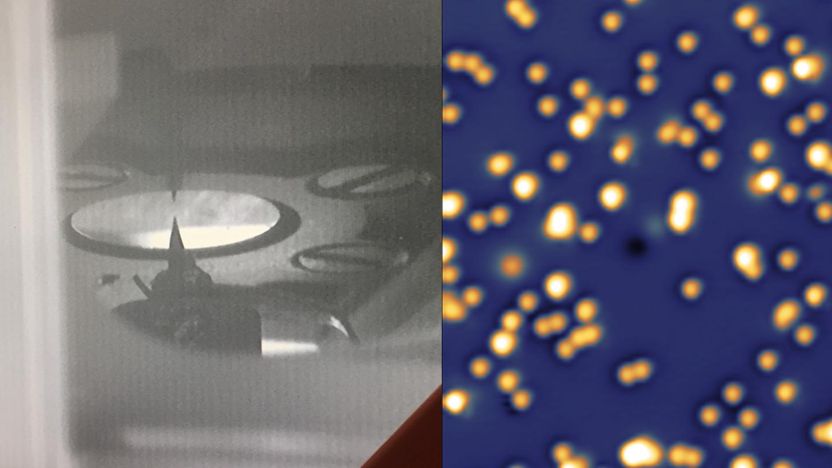
A step closer to single-atom data storage
Silverite
Beta_adrenergic_receptor_kinase-2
Silver_chloride

Study calculates the speed of ice formation
Extremely_low_frequency
Copper(I)_oxide
Metal
Category:Meglitinides

Bubble-recoil could be used to cool microchips, even in space
Electron pairs precede high-temperature superconductivity - New method exploring 'energy gap' shows electron pairs exist before superconductivity sets in
